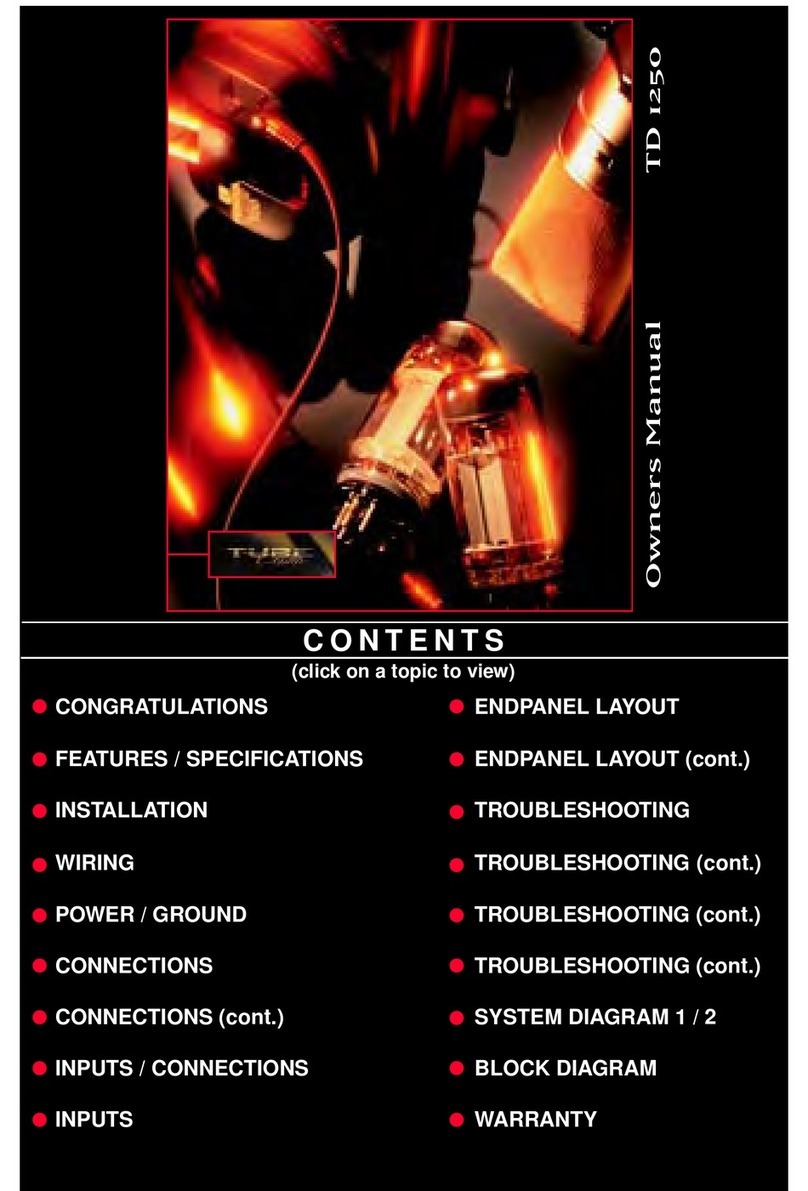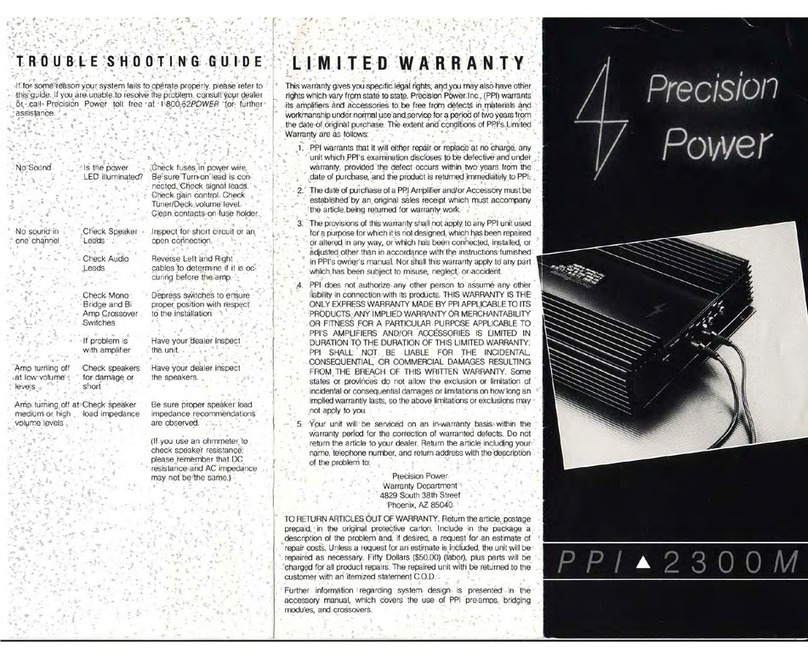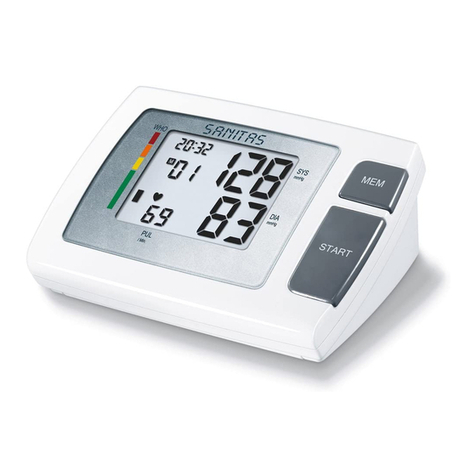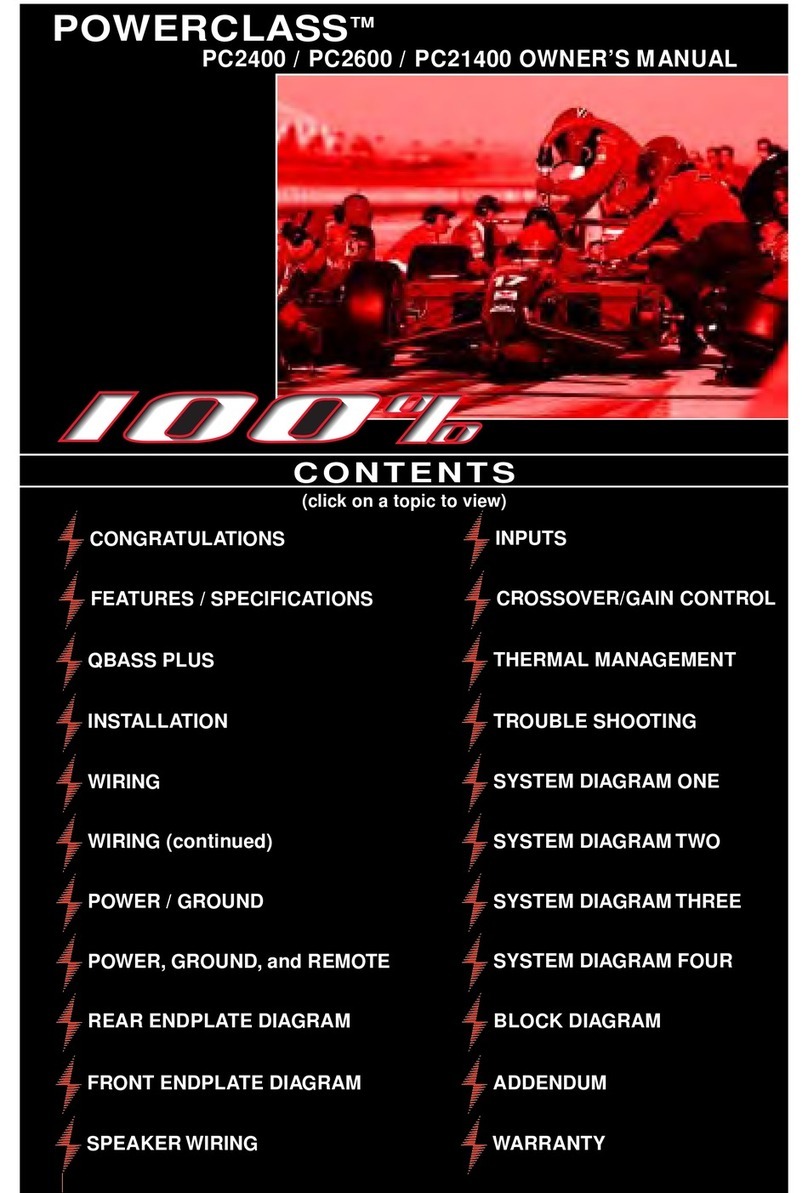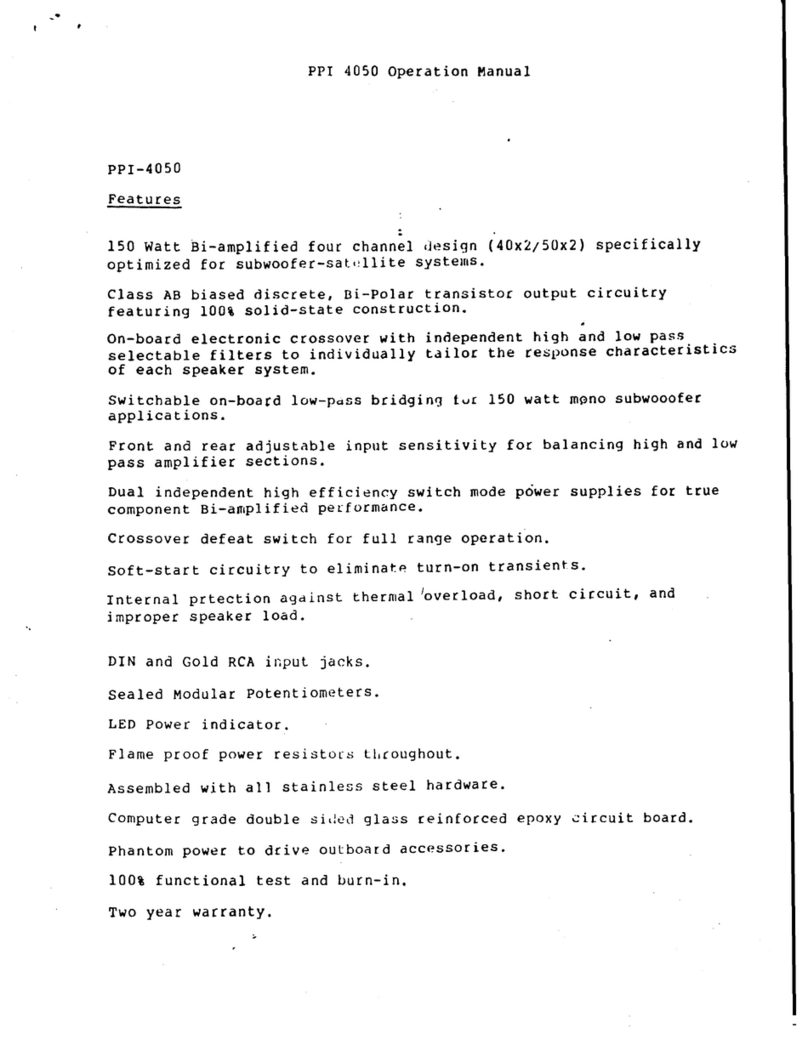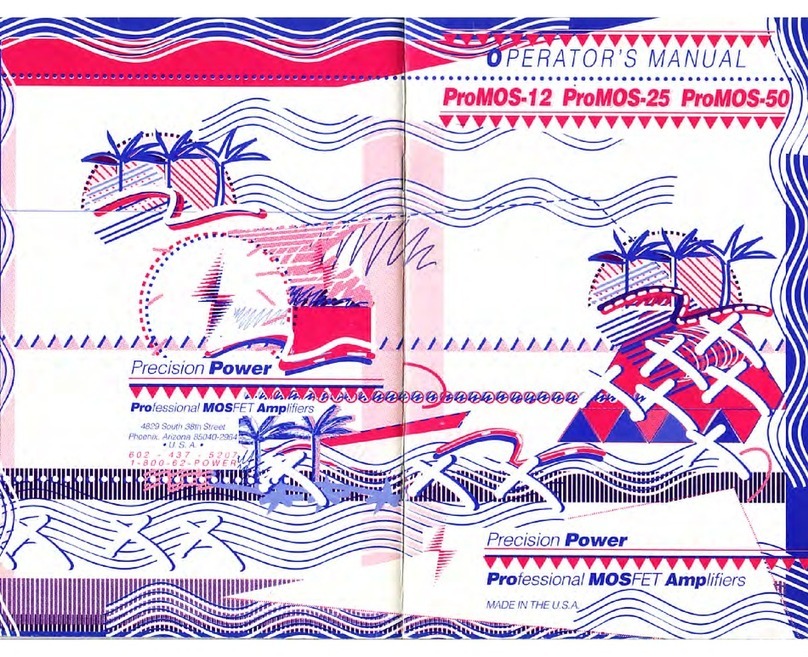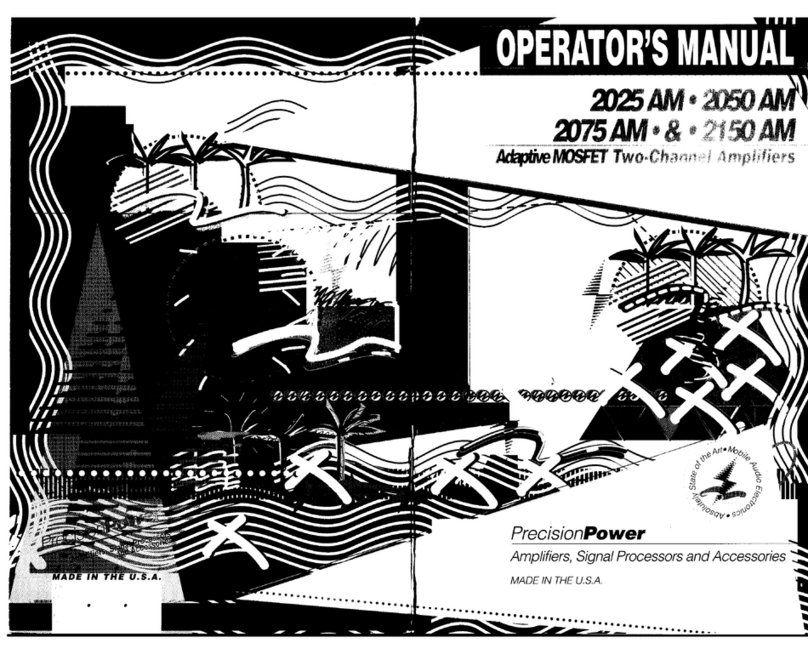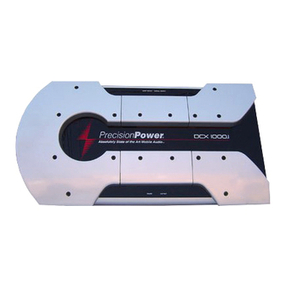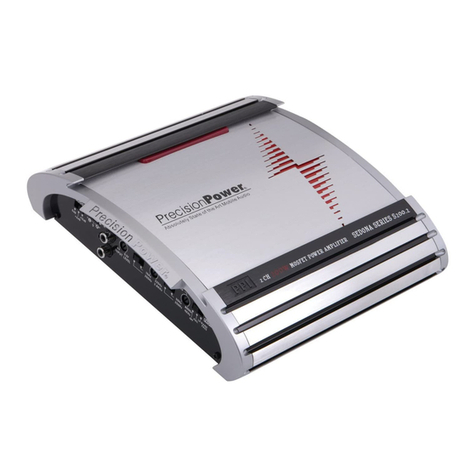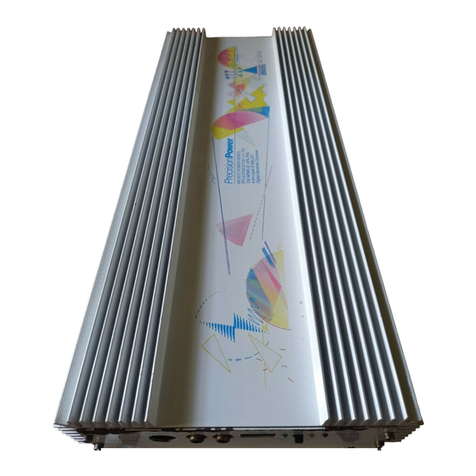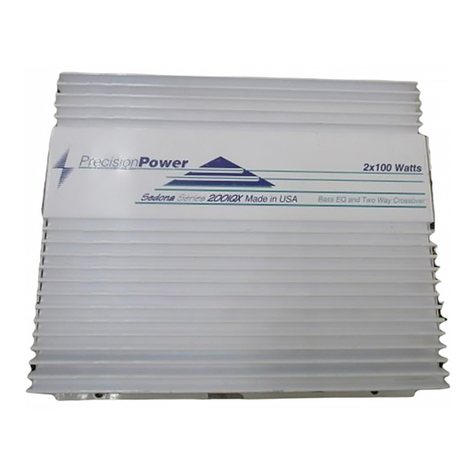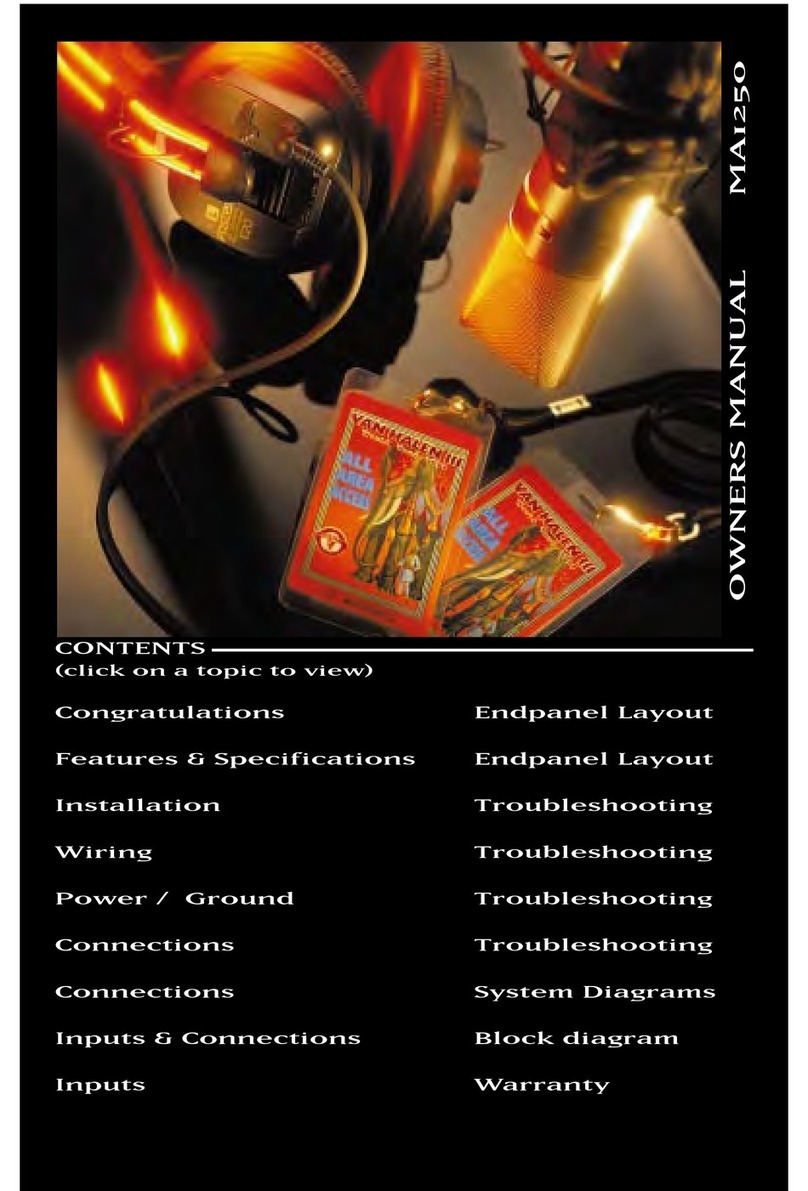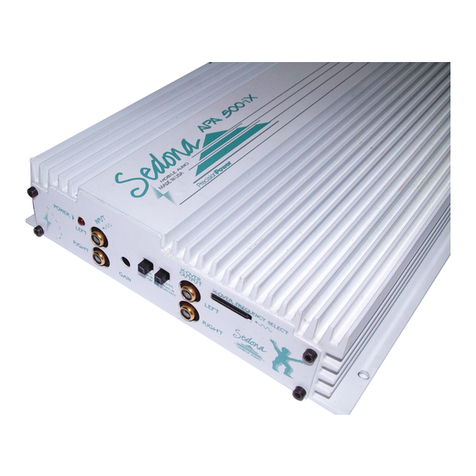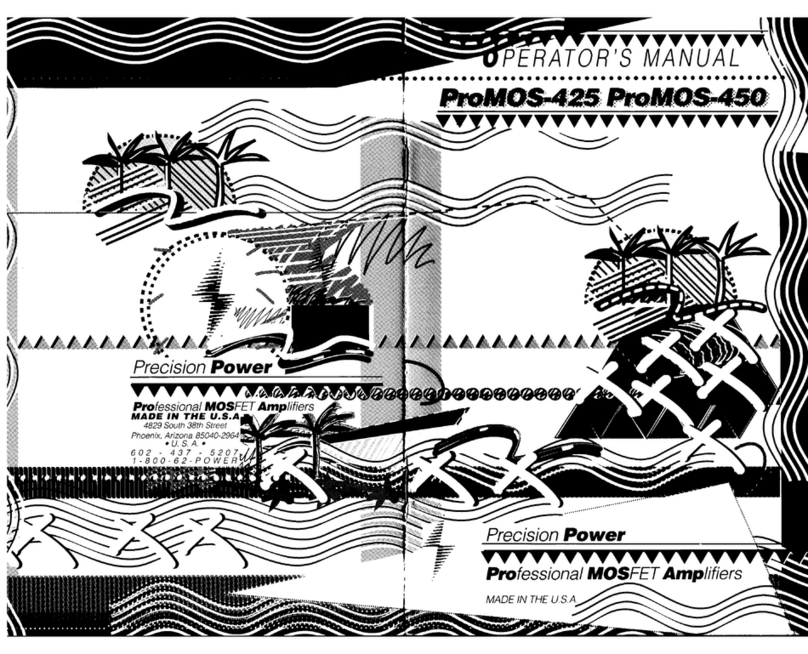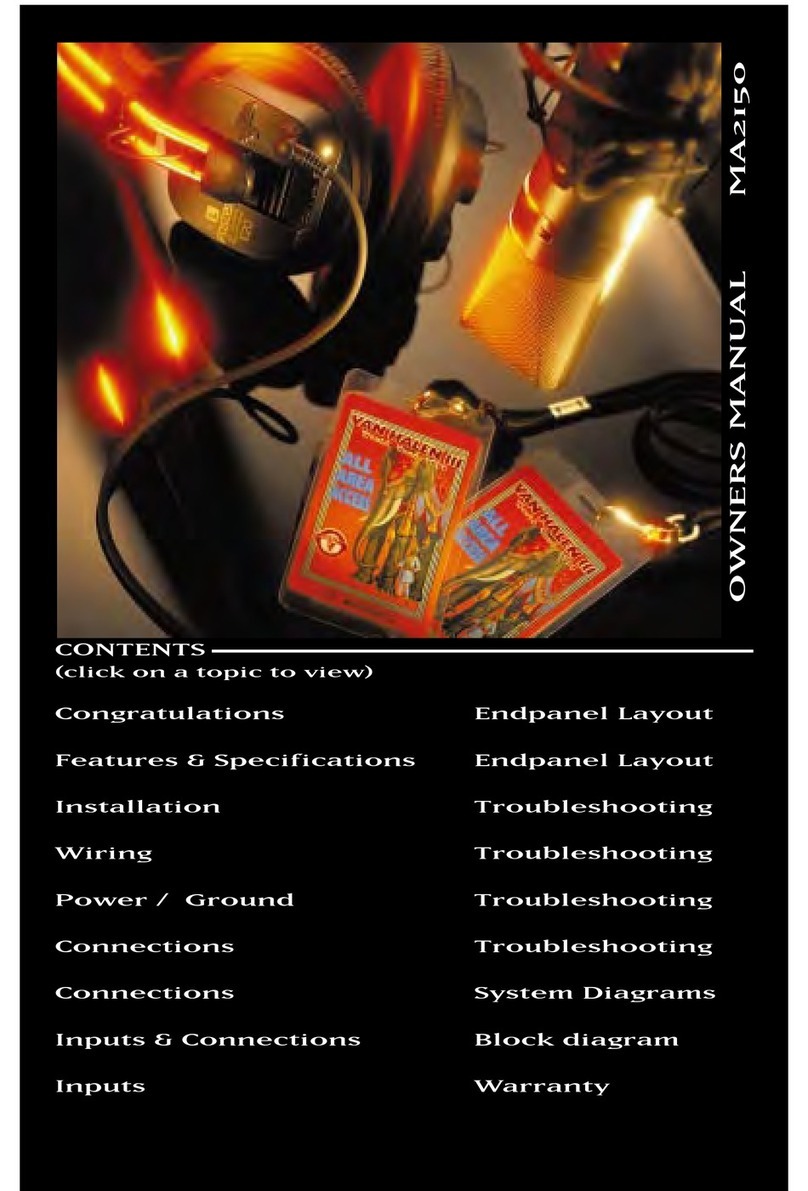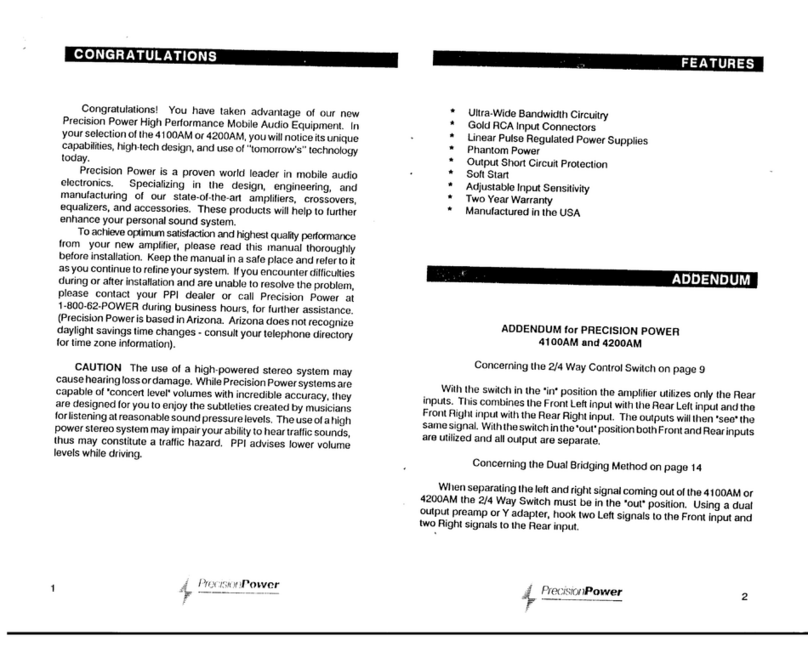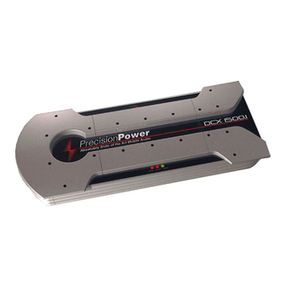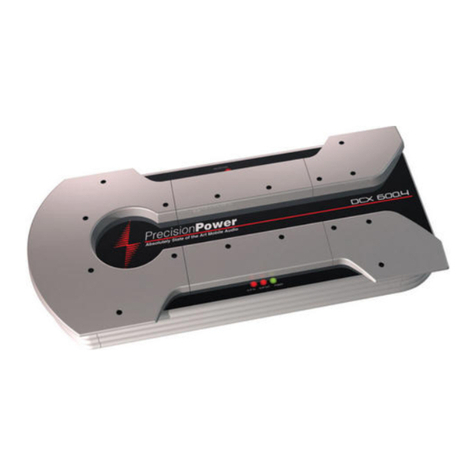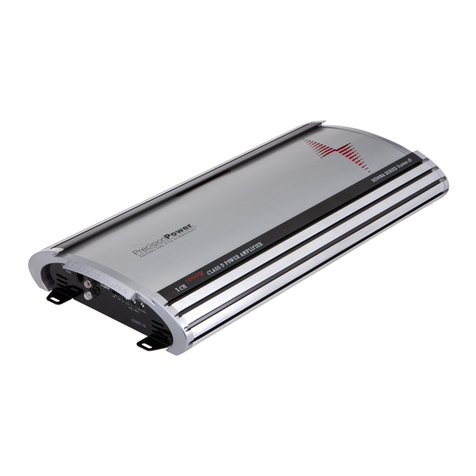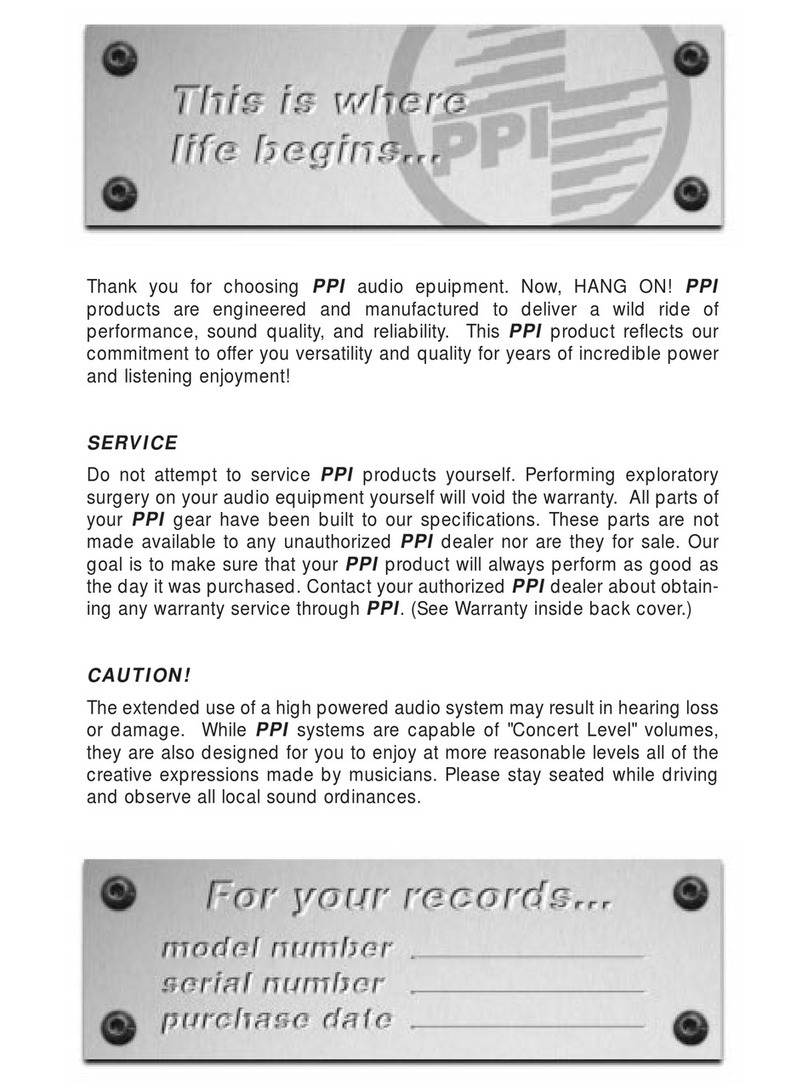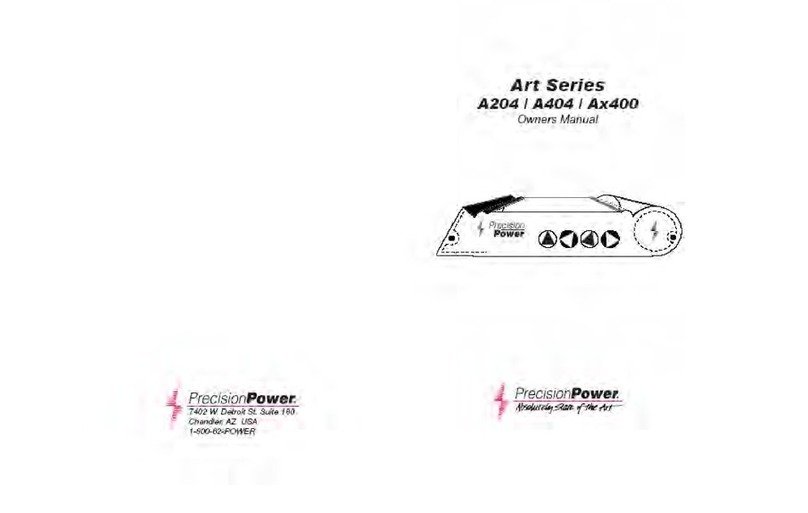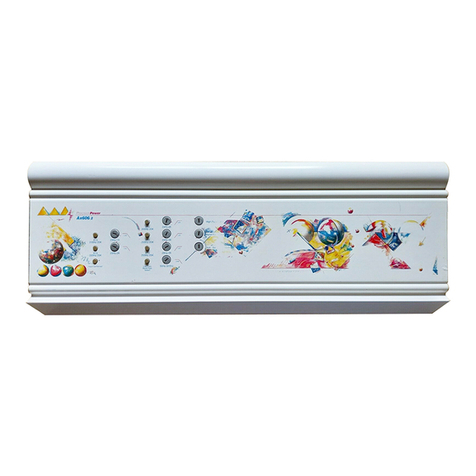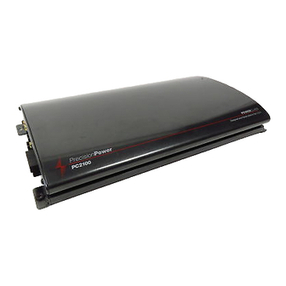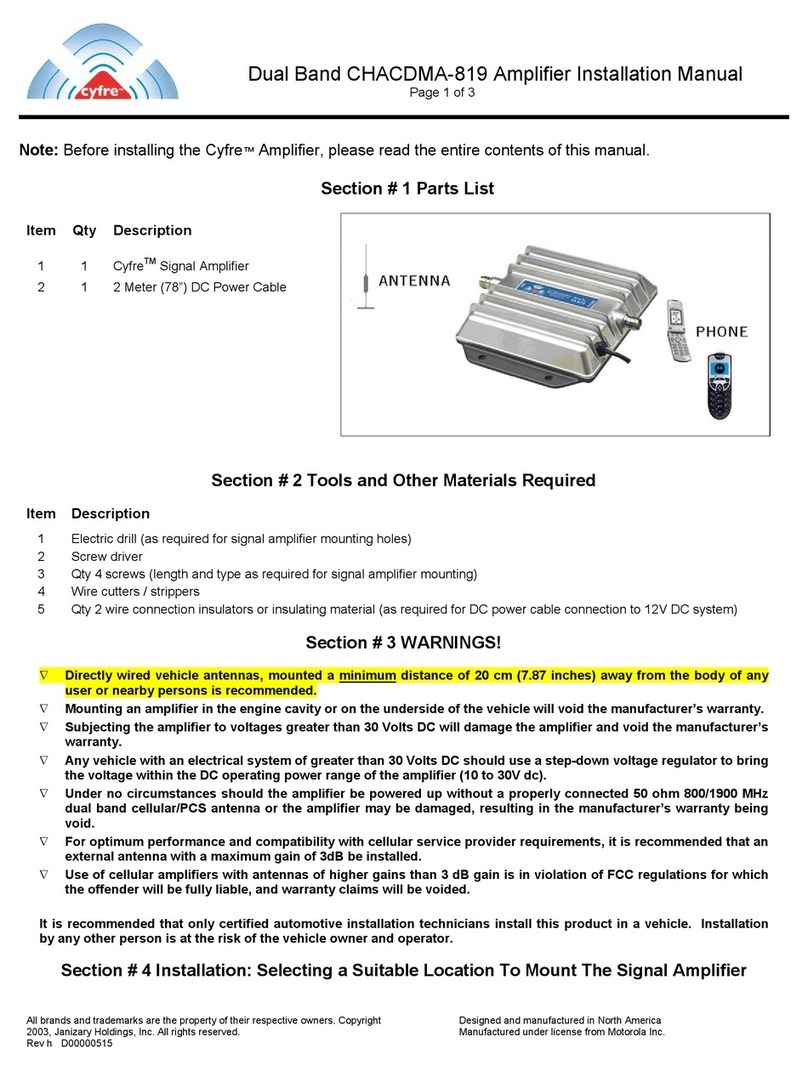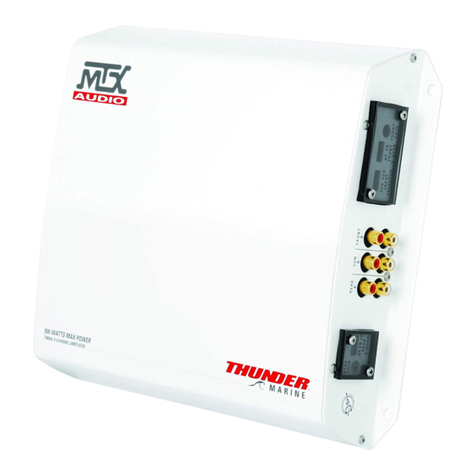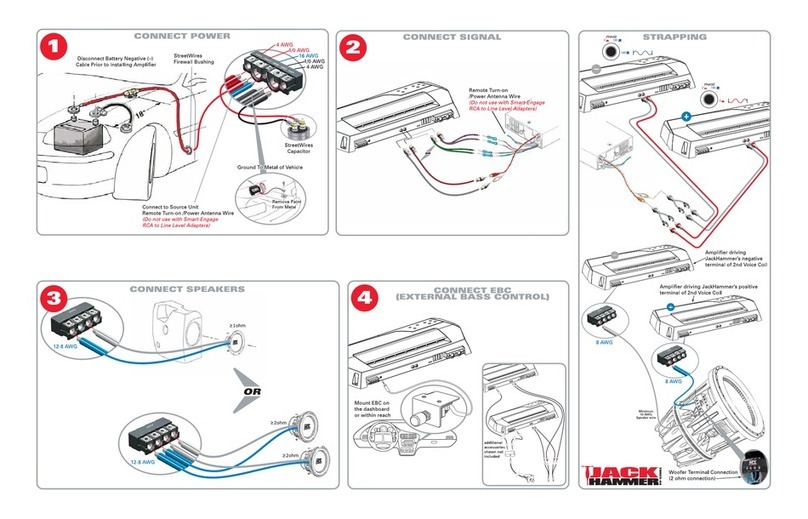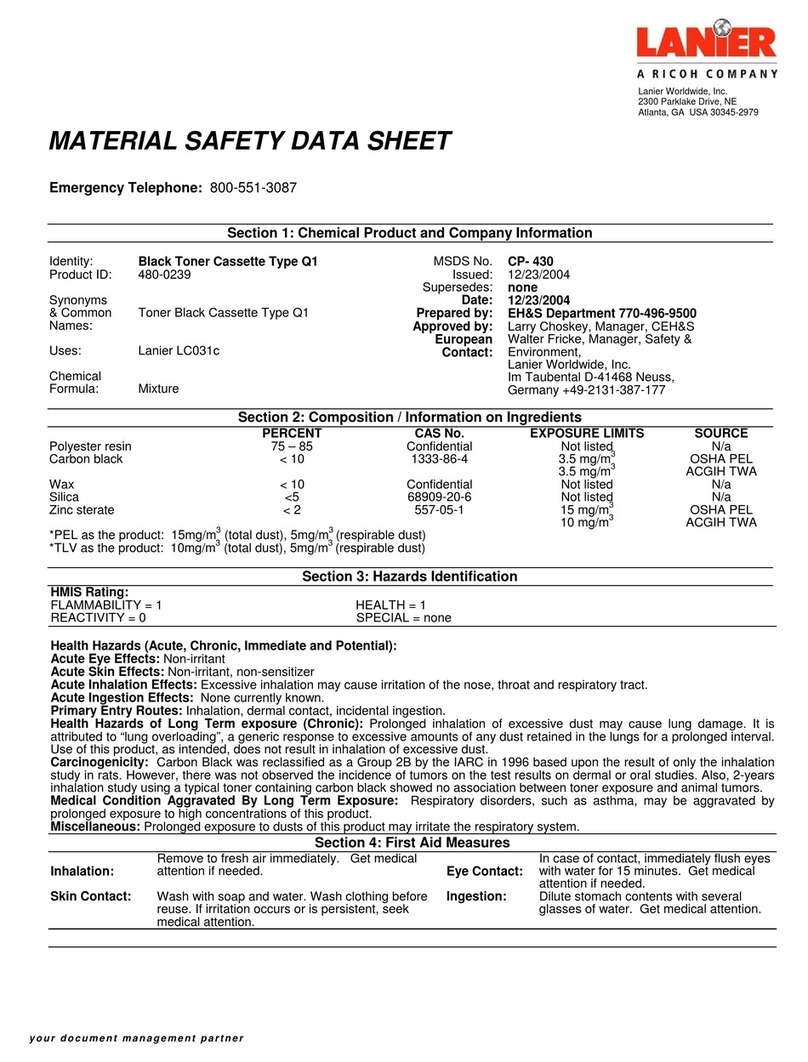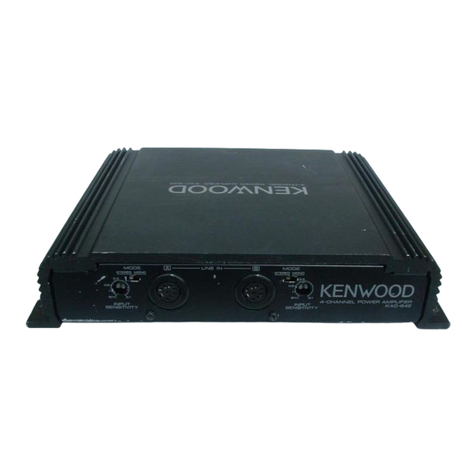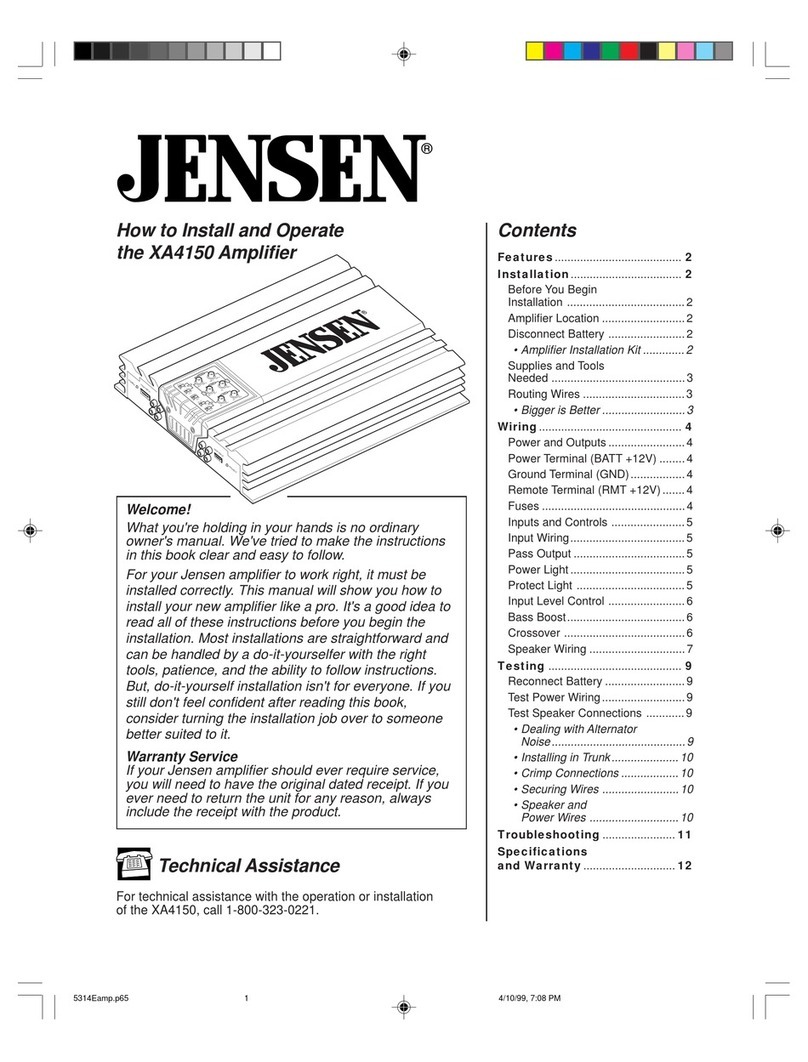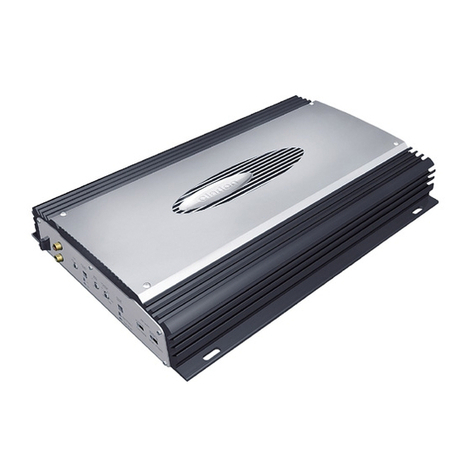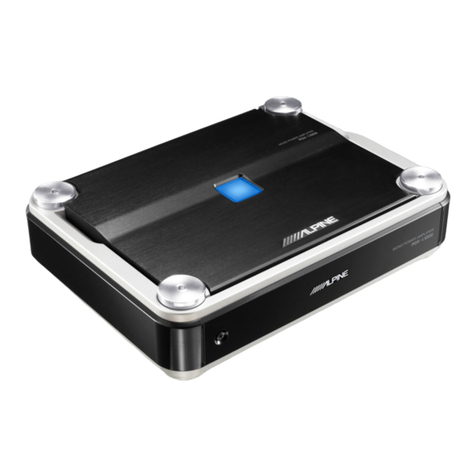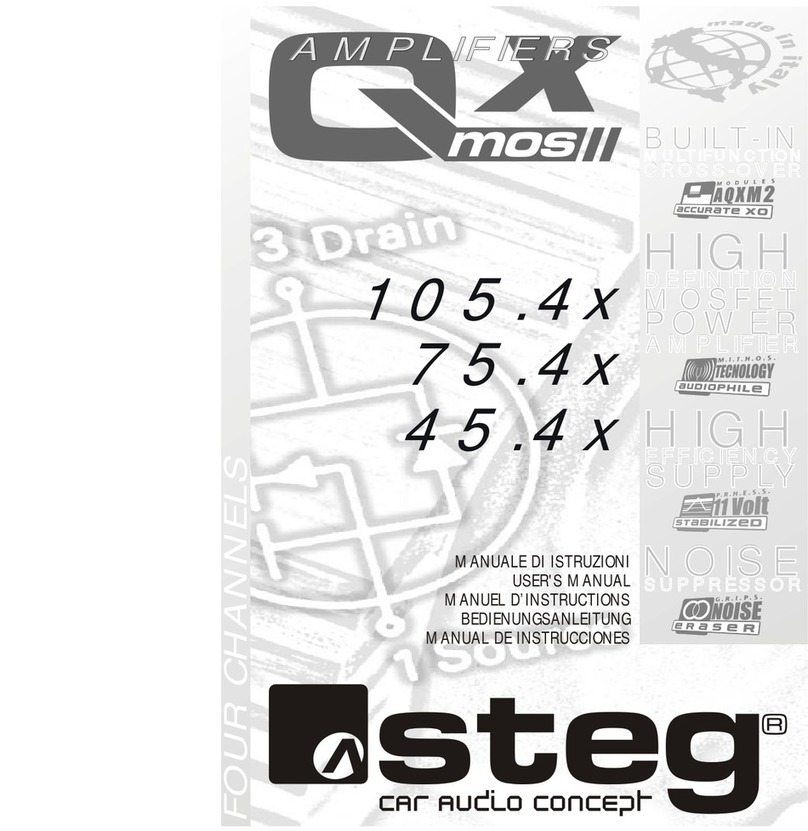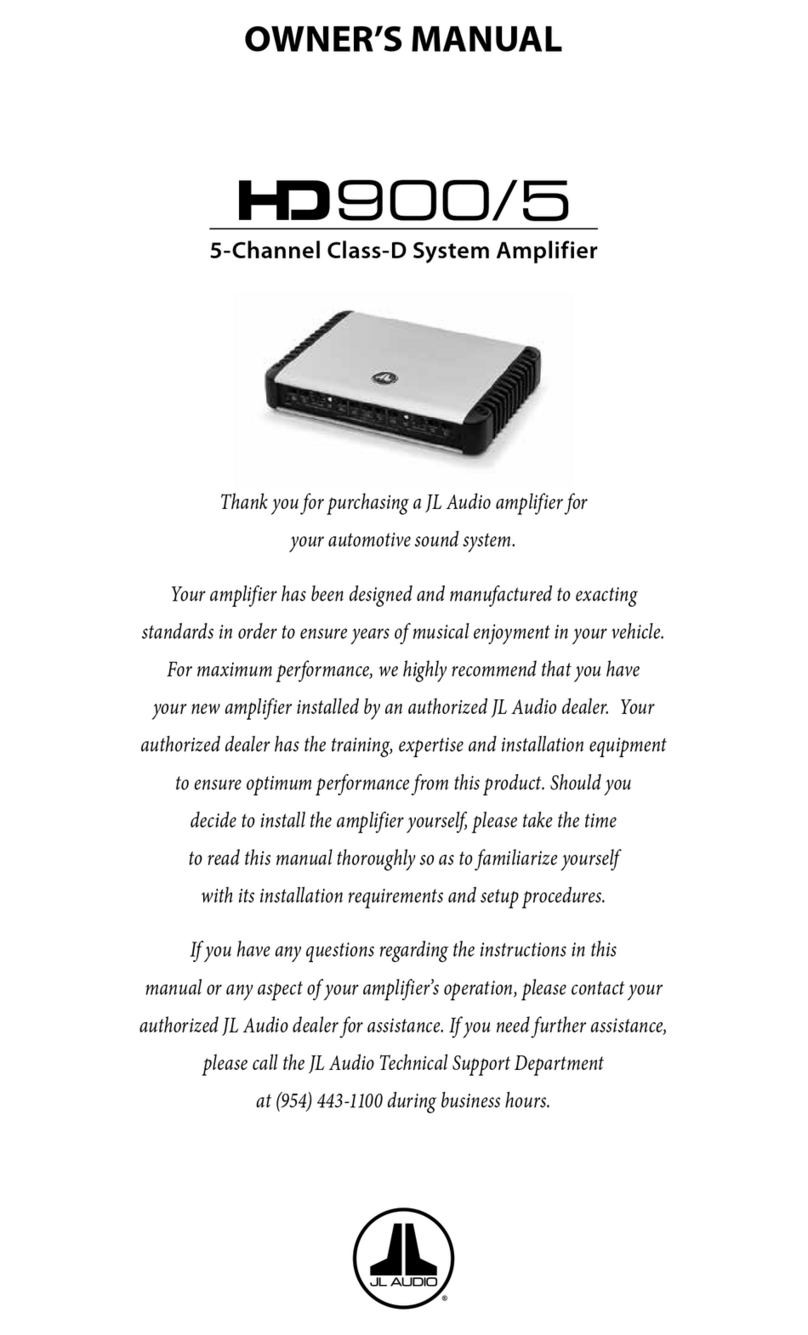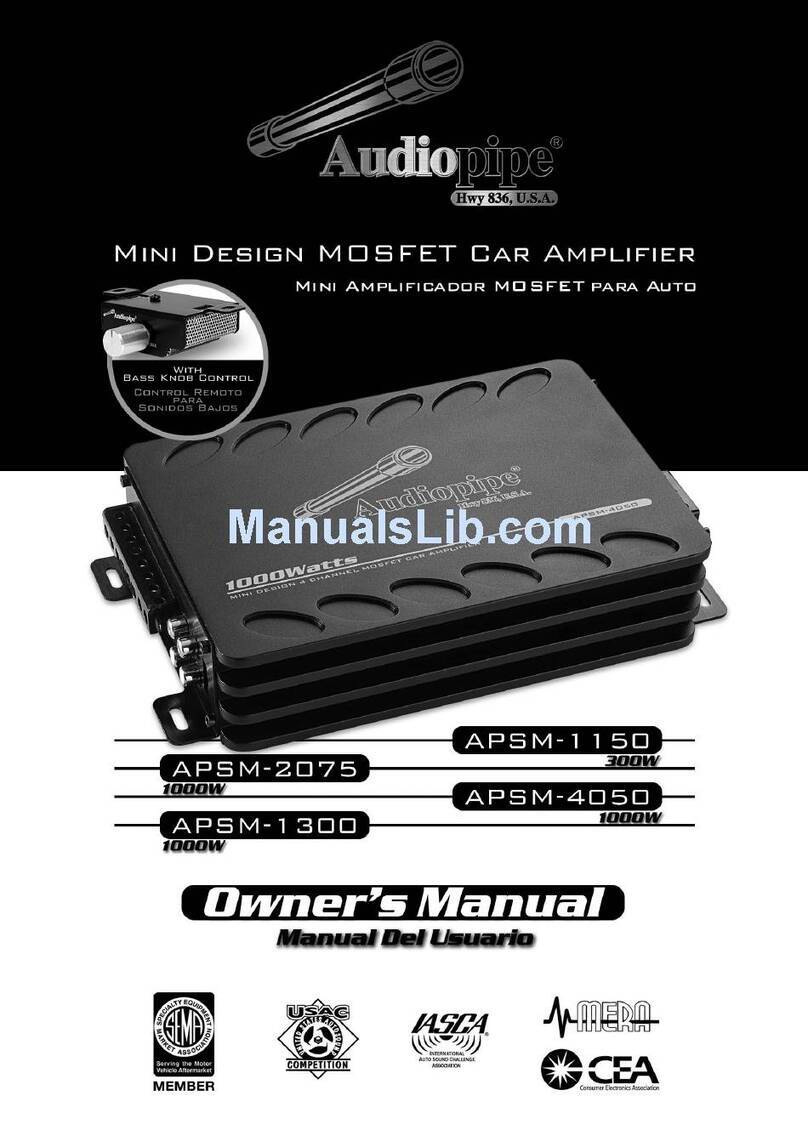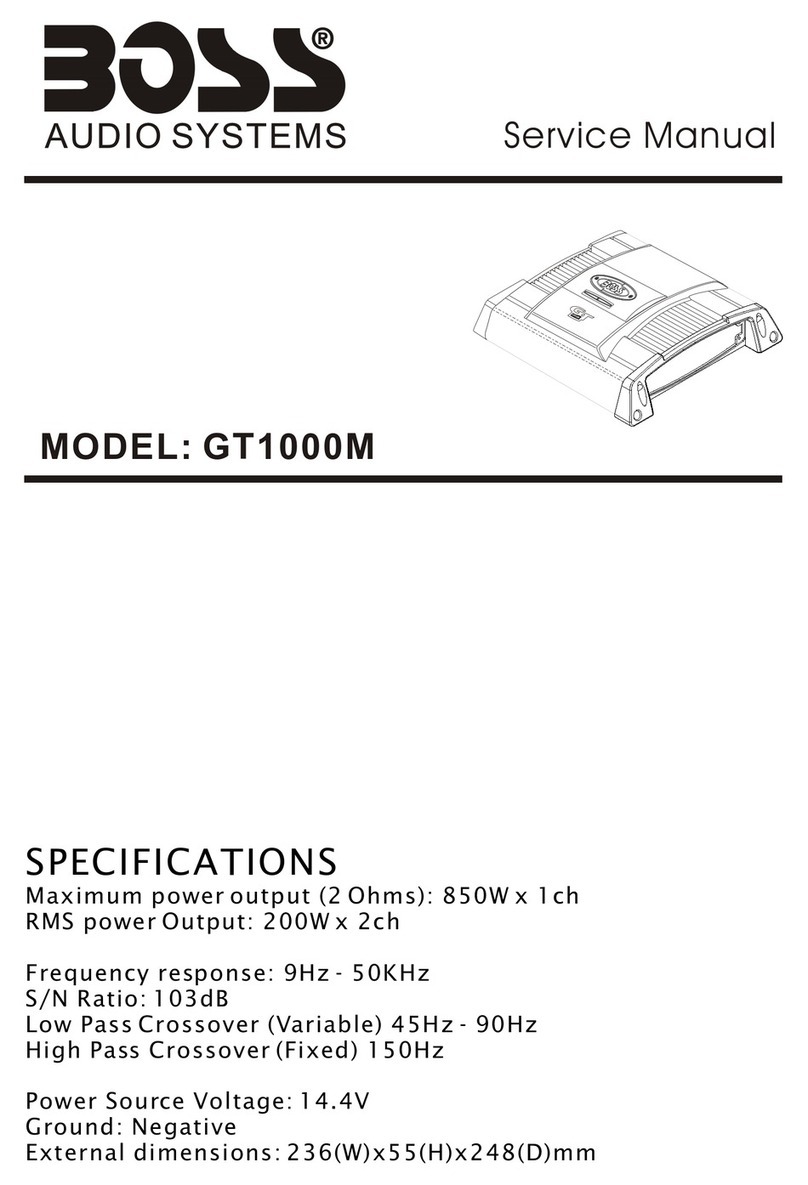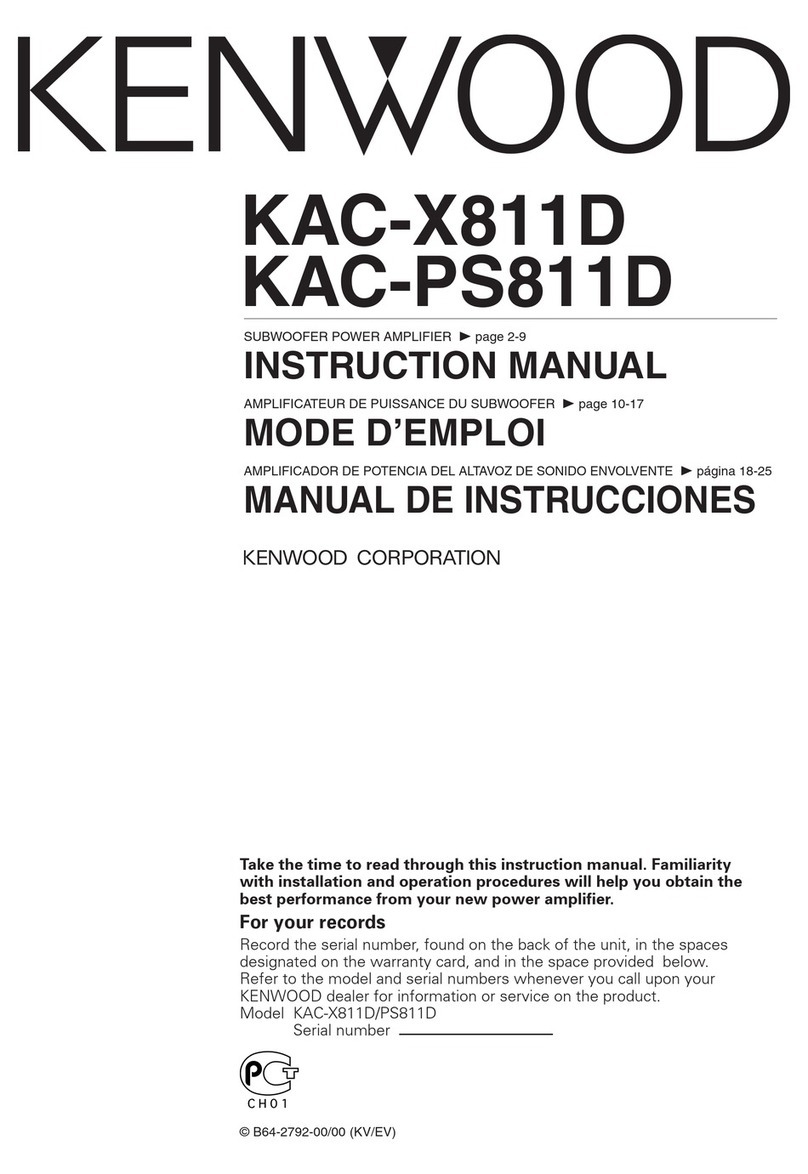1. Cooling Plenums: Maintain a minimum 2” clearance around cooling plenums
for proper amplifier cooling.
2. Crossover HP/LP/FULL Select Switch: Adjust this switch to select the
HPF/LPF/FULLfunction for the speaker outputs.
3. Crossover Frequency Selector Control: Use this control to adjust the
crossover frequency for the speaker output. (See Crossover frequency chart pg.19)
4. RCA Inputs: Connect the RCA cables from source unit, or line driver to these
RCAconnectors.
5. Gain Control: Use this control to match the output level of the source-unit to
the input of the amplifier.
6. -12dB Input Attenuation: Push this switch ‘IN’ for high voltage input (4V-12V)
capability. This button pushed ‘IN’ must be used for speaker level input on common
ground head-units or for high voltage line drivers.
7. QBASS™ Frequency Control: Buttons 1 and 2 offer the capability of selecting
30, 36, 44, or 60Hz to boost by the QBASS™ Control. (See page #2)
8. Output Crossover HP/LP/FULLSelect Switch: Adjust this switch to select the
HP/LP/FULL function for the RCAoutputs. (See Crossover frequency chart pg.19)
9. Output Crossover Frequency Knob: Use this control to adjust the crossover
frequency for the RCAoutputs.
10. RCA Outputs: Left and right RCA outputs provide HP/LP/Full; 30-4KHz to
another amplifier.
11. Speaker Output Connections: Plug the Speaker PowerLock™ connector in
here.
9
1. Adjust all amplifier input gain controls to just above minimum sensitivity (fully
counterclockwise).
2. Using the cleanest music source (CD) playing, turn up the head unit source
volume until you can hear distortion. Now turn it down a bit until you cannot hear
the distortion (usually just below full volume).
3. Increase the Amplifier gain (clockwise) until the onset of audible distortion.
Then decrease the gain to the point just before the distortion starts. This setting
minimizes background noise and prevents overload.
4. Repeat step 3 for any remaining amplifiers in the system.
Your New! PCX™ amplifier has a TC-X Crossover (Total Control X-over©) 30-
4kHz (See page 19 for crossover Detent Chart). 12dB per octave phase correlat-
ed crossover built in to provide superior system flexibility without the added
expense and installation of an outboard crossover. The speaker outputs of
your amplifier are high-pass, low-pass, or all-pass depending on the HP/LP/Full
switch on the front endplate. You would choose low pass (switch middle) to use
this amp for subwoofers, choose high pass (switch left), or full (switch right) to use
this amp for full range speakers.
The RCAoutputs are controlled by a separate HP/LP/Full switch, and are always
independent of the speaker output crossover. As well as being able to independently
select HP/LP/Full, your new PCX™ amplifier allows independent selection of
frequencies from 30-4kHz (See page 19).
NOTE: The System Diagrams beginning on page 15 show several ways to use
the virtually unlimited PCX™ amplifiers internal crossovers in your system.
12
PCX 2125, 2200, 2400 Control Panel
